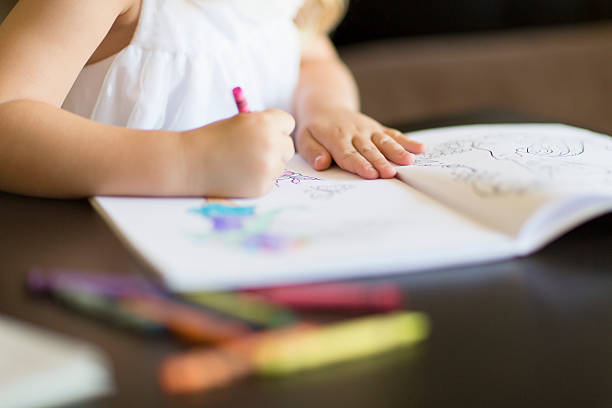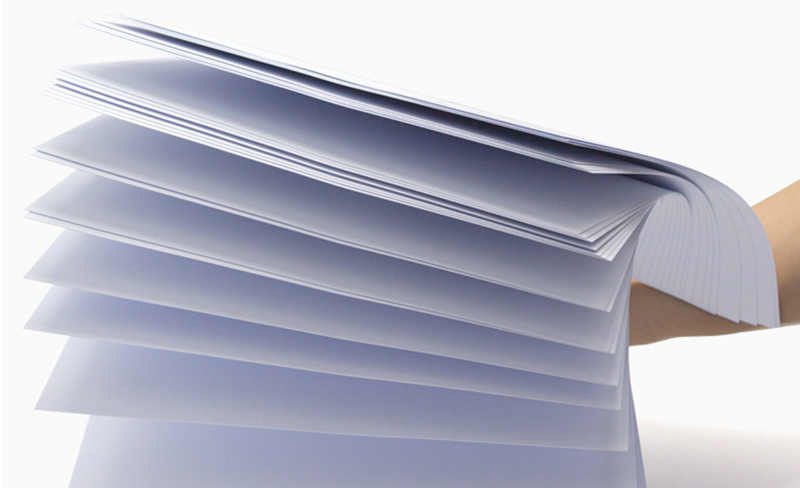
In today’s fast-paced, digital world, finding time for peace is hard. But, there’s an old activity that still works wonders. This activity offers a chance to relax, be creative, and grow. It’s colouring. More than just a kid’s hobby, it’s now seen as an art form enjoyed by all. Engaging children in various crafting activities like coloring illustrations, decorating gifts, making puzzles, creating ornaments, and crafting items like magnets, postcards, and keychains can enhance their creativity, learning, and fun. Although you can buy colouring books ready-made, making your own is special. You could do this for fun or as a gift. You might even want to sell your work. This guide will help you from the first idea to picking the right size for your Children’s Colouring Book to print.. It covers every step to make your design dreams real.
The Power of Coloring
Coloring is more than just a simple pastime. It brings relaxation and sparks creativity. It’s no longer just for kids; adults everywhere are taking part.
It helps people slow down and express themselves in our busy, tech-filled lives. After all, who doesn’t love creating with colors?
Relaxation and Creativity
Coloring isn’t just for fun; it’s good for the mind and soul. This easy activity makes you feel calm and boosts your creativity. Being lost in your colours can feel like meditation, for both kids and grown-ups.
A Beloved Art Form
Coloring is now incredibly popular, especially with grown-ups. You can find intricate designs in adult coloring books, like flowers and mandalas. These books are easy to find, or you can download free pages online.
It’s a great way for anyone to have fun and make beautiful things. You’re never too old or too young to enjoy coloring!
Identifying Your Target Audience

To create a successful coloring book, knowing your audience from the start is key. This means understanding who will use your book. Look at other coloring books to see what’s popular with similar audiences.
Consider Age and Skill Level
Think about the ages and skills of those who will use your book. Kids may like easy, new coloring pages with fun designs that cover a wide range of subjects. But adults often prefer detailed images.
Conduct Surveys or Focus Groups
Use surveys or focus groups to get direct opinions on what people like. Find out their favorite themes and art styles. This feedback helps you make a book that’s just right for them.
Seek Feedback from Peers or Experts
Don’t forget to get advice from others in the industry too. Talking with peers or experts can improve your book. They might offer insights that make your book even better.
Consider Demographics and Interests
It’s important to know who your audience is and what they like. Whether they enjoy nature, fantasy, or abstract art, understanding their interests helps you choose the right theme and content.
By really understanding who you’re creating for, you can make a coloring book that really hits the mark. It’s all about pleasing your audience and making something they will love.
Brainstorming and Planning Your Colouring Book to Print
Planning your colouring book is such a fun process. It helps you show your creative ideas. Start by picking a theme. This could be about anything – maybe a specific topic or just something you love.
Then, look for images and art that fit this theme. This makes your work more inspired. Next, sketch out some ideas. Try different layouts and designs to see what works best.
Don’t forget to add cool details like patterns and hidden pictures. These extras make your book more interesting. They also make readers want to explore every page.
Taking time to plan makes your book better. It ensures that your ideas are clear and your book is fun to use. So, planning is really important to make a great colouring book.
Designing an Engaging Colouring Book to Print

When making your coloring book, think about what will interest your audience. Use many different subjects to please everyone. Make sure to have simple and more complex designs. This way, both new and skilled colorists will enjoy your book.
Diverse Subjects within Your Theme
Bring your designs to life by adding many subjects to make your book interesting to all. Whether it’s for kids, teens, or adults, have something for everyone. This will make your book a hit with a broad range of people.
Finding Balance
Mix both simple and complex patterns in your designs. This makes sure anyone can enjoy colouring your book. A mix of easy and detailed designs will attract more people to colour.
Patterns and Textures
Add patterns and textures to your designs. This makes your book more fun and visually appealing. Try out different designs, like geometric shapes or nature patterns, to make a stunning book.
Negative Space
Using empty space well can make your designs stand out. It lets the details shine. This approach can make your coloring book more special and artistic.
Inspirational Quotes or Messages
Adding inspiring messages can really uplift your book. These messages can be about anything that inspires, like being creative or staying positive. They will make your designs more memorable for people who colour them.
Create Interaction
Try adding fun things like hidden objects or mazes to your pages. This will make people want to explore your book. It adds a fun twist to the whole colouring experience.
Pay Attention to Composition
Make sure each page looks good and fits well together. A well-balanced design is key. This will draw people in and make them love your book even more.
Selecting Suitable Colouring Book to Print Sizes
Making a colouring book involves choosing the right size. This choice can affect how easy it is to use and carry, plus how good it looks. Think about who will use the book when picking the size.
Consider Your Target Audience
If it’s for kids, pick a smaller size like 8×8 inches. This makes it easier for them to hold and colour. Adults who love colouring might like something bigger, such as 9×12 or even 11×14 inches. These sizes are great for detailed, immersive designs.
Coloring Mediums Compatibility
Consider what type of colouring supplies will be used on the book. Books with thicker paper, between 70 to 100 lbs, are best. They work well with coloured pencils, markers, and watercolours without any problems.
Portability
Think about if the book needs to be carried around easily. Smaller books fit in pockets and are great for colouring on the go. They’re perfect for people who like to colour while they travel or during their daily commute.
Visual Impact
The size of the book affects how the designs look. Bigger books can show finer details and a grander design scale. Smaller books are better for simpler, clean designs.
Printing and Production Costs
It’s also crucial to think about production costs. Larger books can be more costly to make. If you’re printing a small number, this cost could go higher. Finding a good size that doesn’t spike the production cost can make your project more successful.
Choosing High-Quality Paper

Selecting the right paper is key for a great coloring experience. Look for heavyweight and thick paper, about 100-150 gsm. This means colors won’t bleed and you get a strong surface. The texture of the paper matters too. A slightly rough surface can hold colored pencils better.
Make sure the paper makes colors look bright and rich. It should also be tough enough to last through many coloring sessions. For those who care about the planet, go for paper made from sustainable or recycled sources. Finding the right balance between price and quality is critical. Better paper might cost more, but it improves the whole coloring experience.
Colouring Book to Print Weight and Thickness
The weight and thickness of paper are very important. Thicker papers, like Bristol, are more durable. They deal well with different coloring materials. The GSM (grams per square meter) number shows how thick the paper is.
Texture
The texture of paper plays a big role in coloring books. A slightly rough or toothy surface helps colored pencils grip better. This means you can color with more control. Smoother papers work well for detailed work.
Color Vibrancy
Choosing paper that boosts the vibrancy and richness of colors is vital. Look for paper that showcases your colors at their best.
Durability
How well the paper stands up to coloring again and again without tearing is a big deal. Thicker and heavier papers are more durable.
Environmentally-friendly Colouring Book to Print options
For those who care about the earth, selling paper from sustainable forests or recycled sources is important. This meets the demand for eco-friendly options.
Cost
Choosing paper that fits your budget is crucial. While good paper is important, you also have to think about cost. Investing in higher quality might be more expensive, but it makes the coloring experience much better.
Binding Options for Coloring Books to Print
Book binding brings a coloring book together. Your choice impacts the look and feel. It affects whether pages lay flat, the book opens easily, and if the pages stay together. Common binding options are perfect binding, using adhesive on the spine, and saddle stitching, which staples the pages.
Perfect binding makes coloring books look professional. It uses adhesive on the spine to keep the pages together. This method is strong and lasts long. Saddle stitching is cheaper. It staples the pages on the spine and works well for thinner coloring books with 48 pages or less.
For thicker books or those with heavier paper, consider sewn perfect binding. It sews the pages with thread, making the book sturdy. Wire-O and spiral binding are good if you want the book to lie flat for ease of use.
When choosing a binding, think about the book’s page count, paper weight, and who will use it. The right binding improves how well the book works and how much people like it. Make a wise choice for a fun and good coloring experience for your readers.
Colouring Book To Print
After making your colourful colouring book designs, the next step is to get them ready for printing. You need to change your drawings, whether hand-drawn or digital, into a file that a printing company can use easily.
Digital Conversion of Art Files for Your Colouring Book to Print
Make sure your designs become high-quality image files, like JPEG or PNG, at 300 dpi. This makes certain your colouring pages print well and look clear. Also, keep your files neat in folders to send them off easily.
Ordering Quantities
Think about how many colouring books you’ll need to order. Usually, it’s cheaper to print a lot. But, know your audience and how many books they might buy. This way, you have enough to sell but won’t end up with too many unsold books.
Partnering with a Printing and Fulfillment Company
Working with a good printing and fulfillment company, like MVP Print, can make your job easier. They can help with everything from printing to shipping directly to customers. This lets you put all your focus on making great art for your book. Their experience and big operations can lead to a better product and happier customers.
Marketing and Promoting Your Coloring Book to Print

After printing your coloring book, it’s time to share it with the world.
Firstly, make a website and use social media to show your book. Share some coloring pages and how you made the book. Also, chat with people who like your book online and have coloring contests.
Collaborating with Influencers
Work with online people who love coloring or art. They can help lots of people see your book. It’s a good way to reach folks who are interested in what you’ve created.
Creating Promotions and Bundle Offers
Make deals to get more people to buy your book. Offer cheaper prices, free sending, or add extras like pencils. This makes your book more tempting to buy.
Participating in Local Events
Sell your books at places where lots of people gather, like fairs. This lets you meet your readers face-to-face. You can talk, get feedback, and sell more this way.
Colouring Book to Print for Children ? A Conclusion
We’ve taken you through creating a children’s coloring book step-by-step. This includes finding your target audience and making your book fun. We’ve also looked at choosing the best paper and how to market it. So, you’re all set to make your creative idea real. Whether it’s for fun, to promote something, or for sale, our tips and tricks can make your book shine.
The coloring book scene in Australia is booming. In 2021, the market hit $32 million. Brands can rake in up to $10,000 monthly. For folks like you, earnings can be between $500 and $3,500 each month. By knowing what your audience likes and using top-notch materials, you can make a standout book.
Your decisions about paper and binding really matter for your coloring book’s look. Also, a strong online presence and working with the right people can power up your book. Paying close attention to every detail can turn your coloring book into a fan favorite. It can truly enrich people’s creative journeys.
FAQ
What are the key steps in creating a coloring book to print?
The main steps are figuring out who you’re making the book for. Research and plan your coloring book. Create exciting designs. Pick the best sizes and paper. Decide on the right way to bind your book. Then, get your art ready for printing and share your book with the world.
How can I ensure my coloring book appeals to my target audience?
First, look at other coloring books that your audience likes. Think about the age and skill level of those who will use it. Talk to people with surveys or focus groups. Get advice from friends or experts. Always adjust your book’s themes and designs to what your audience loves.
What factors should I consider when selecting the size of my coloring book to print?
Think about who will use the book and how they will color it. Consider if they’ll carry it around. The size should show your designs well. Also, keep printing and production costs in mind.
What type of paper should I choose for my coloring book to print ?
Use thick, heavy paper that won’t let colors bleed. The paper should have a bit of texture. This makes colors look brighter. Make sure the paper is durable and good for the environment. Find a paper that balances quality and price.
What binding options are available for coloring books?
You can choose perfect binding or saddle stitching. Perfect binding glues the pages at the spine. Saddle stitching uses staples. The binding affects how the book opens, lays flat, and keeps the pages together.
How can I effectively market and promote my coloring book?
Start by creating a website and using social media. Engage with your readers to build a community. Work with influencers or bloggers. Offer promotions or bundles. Look for chances to sell your book at events or markets.








